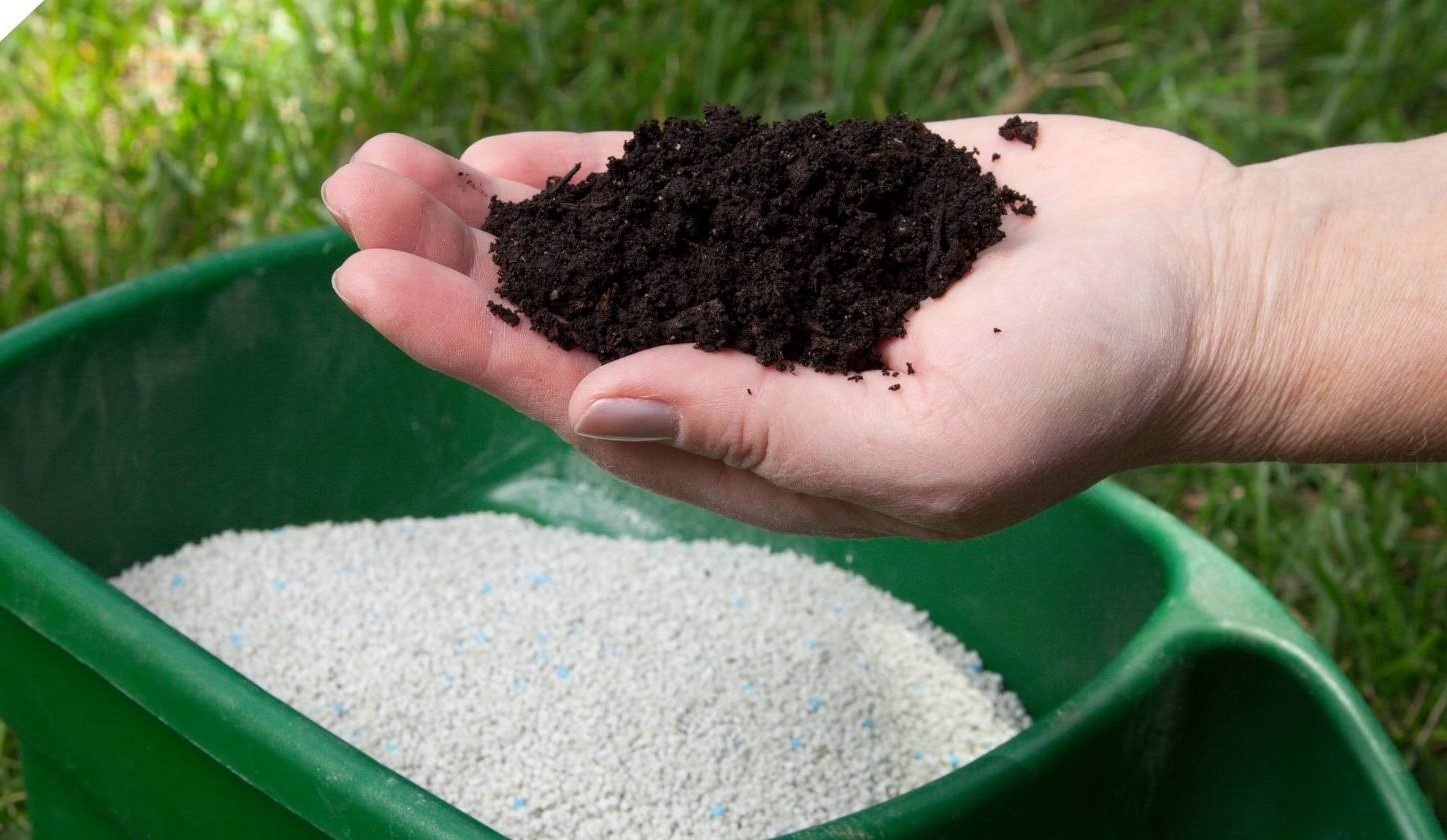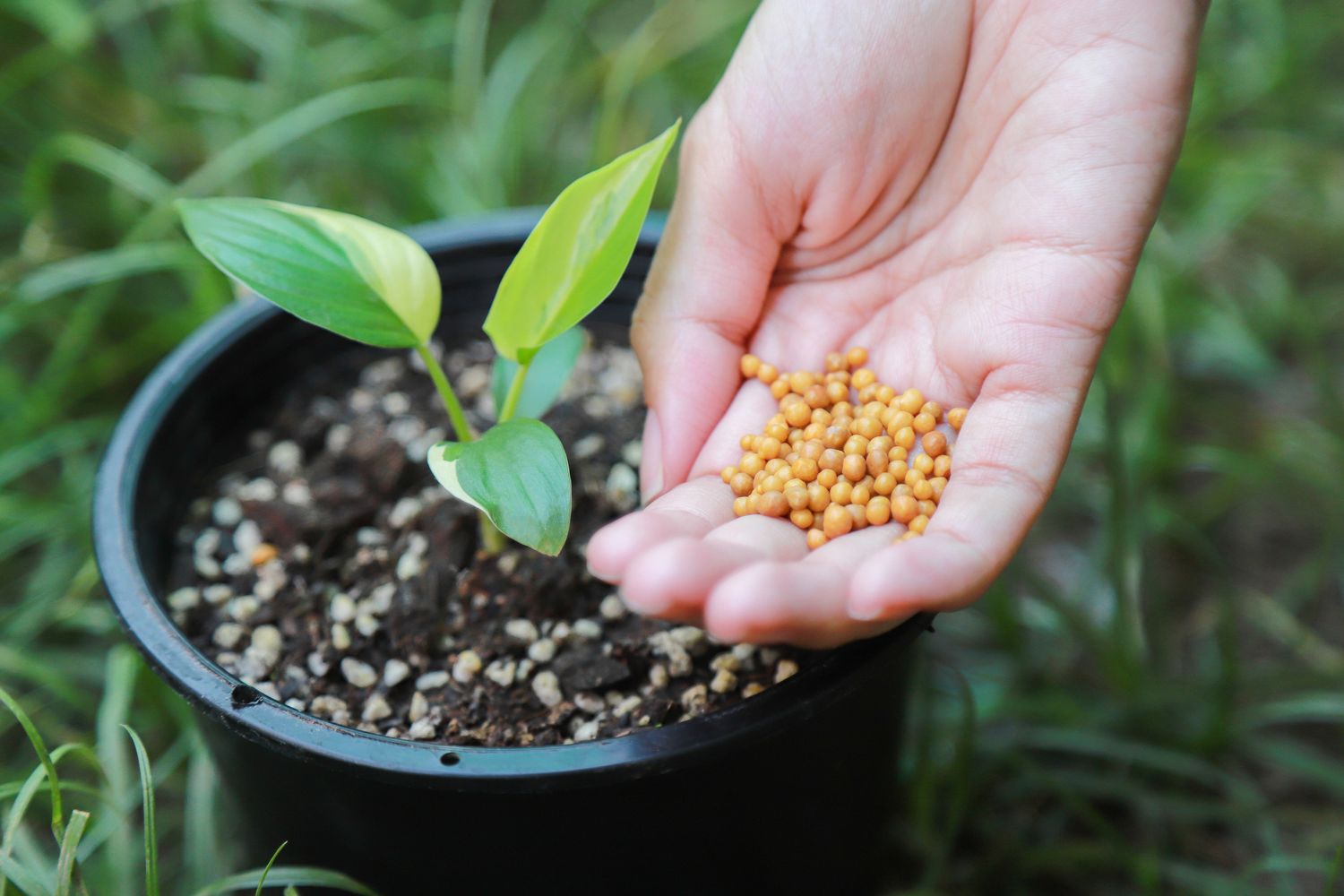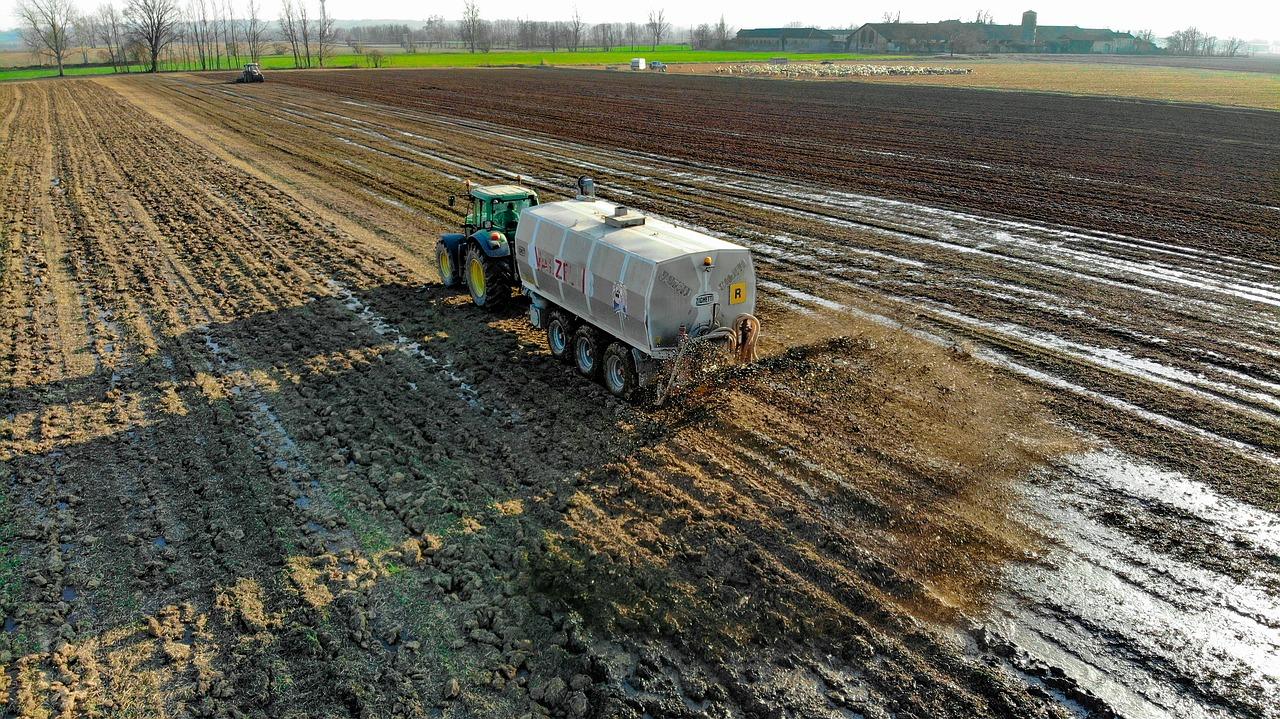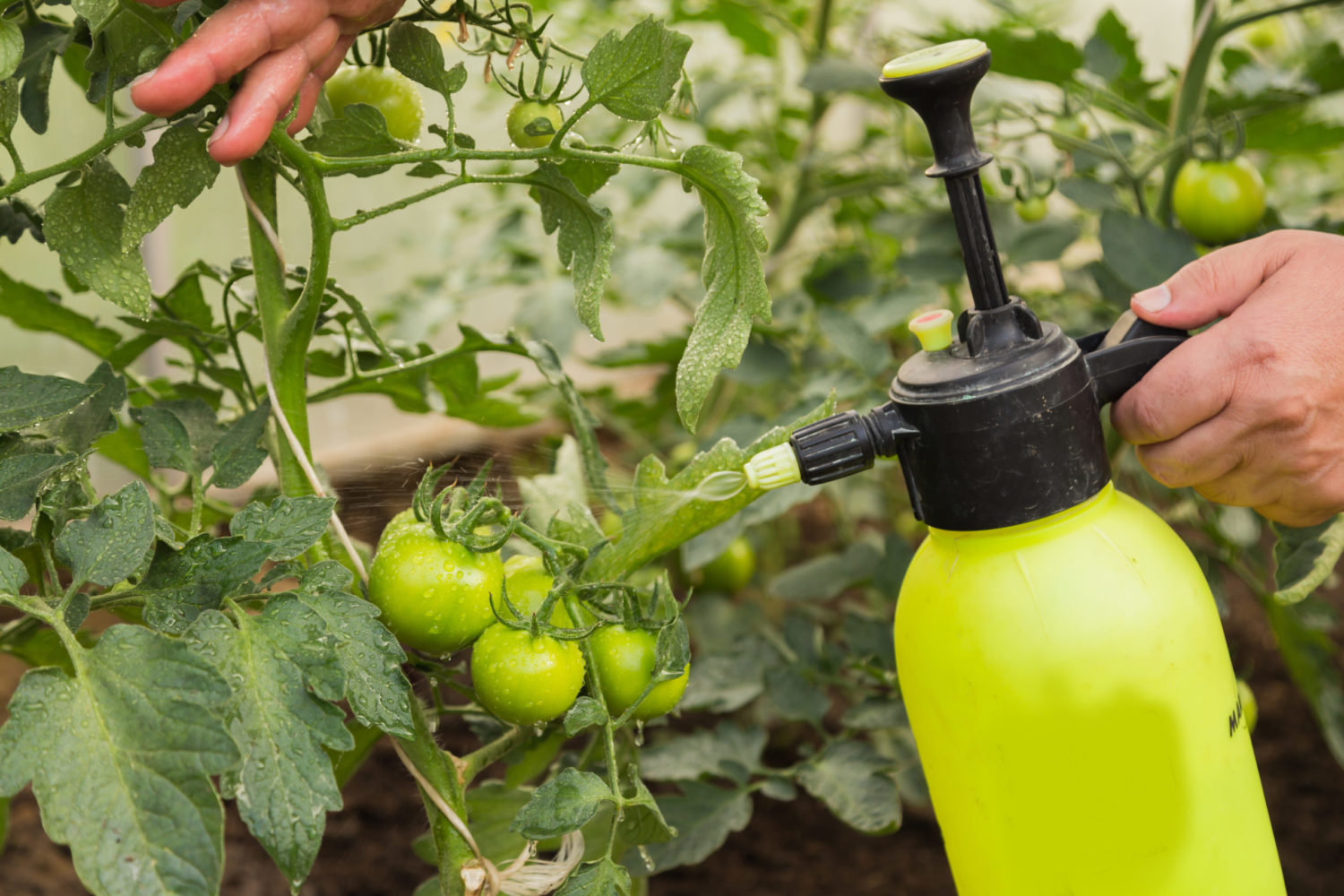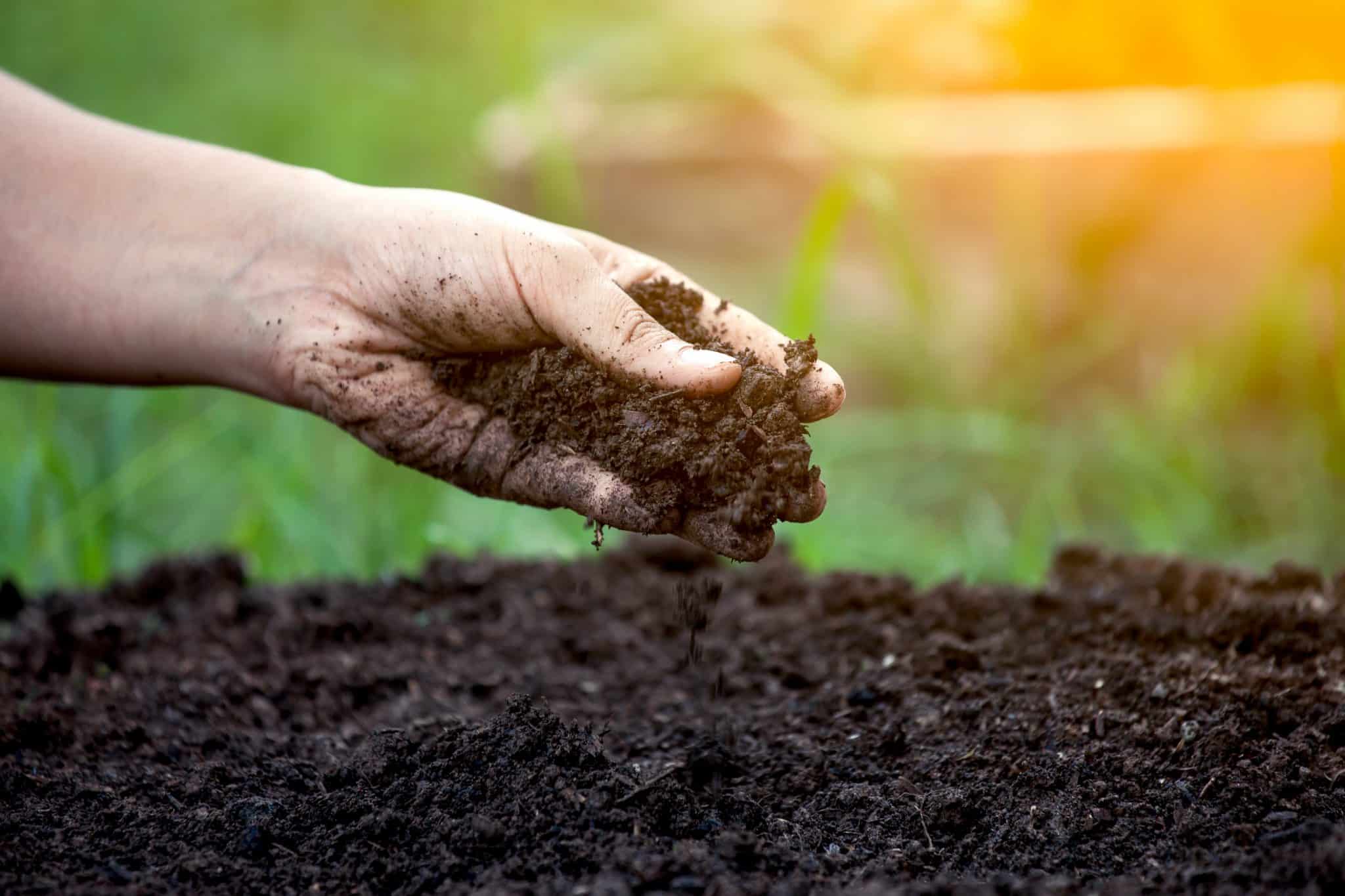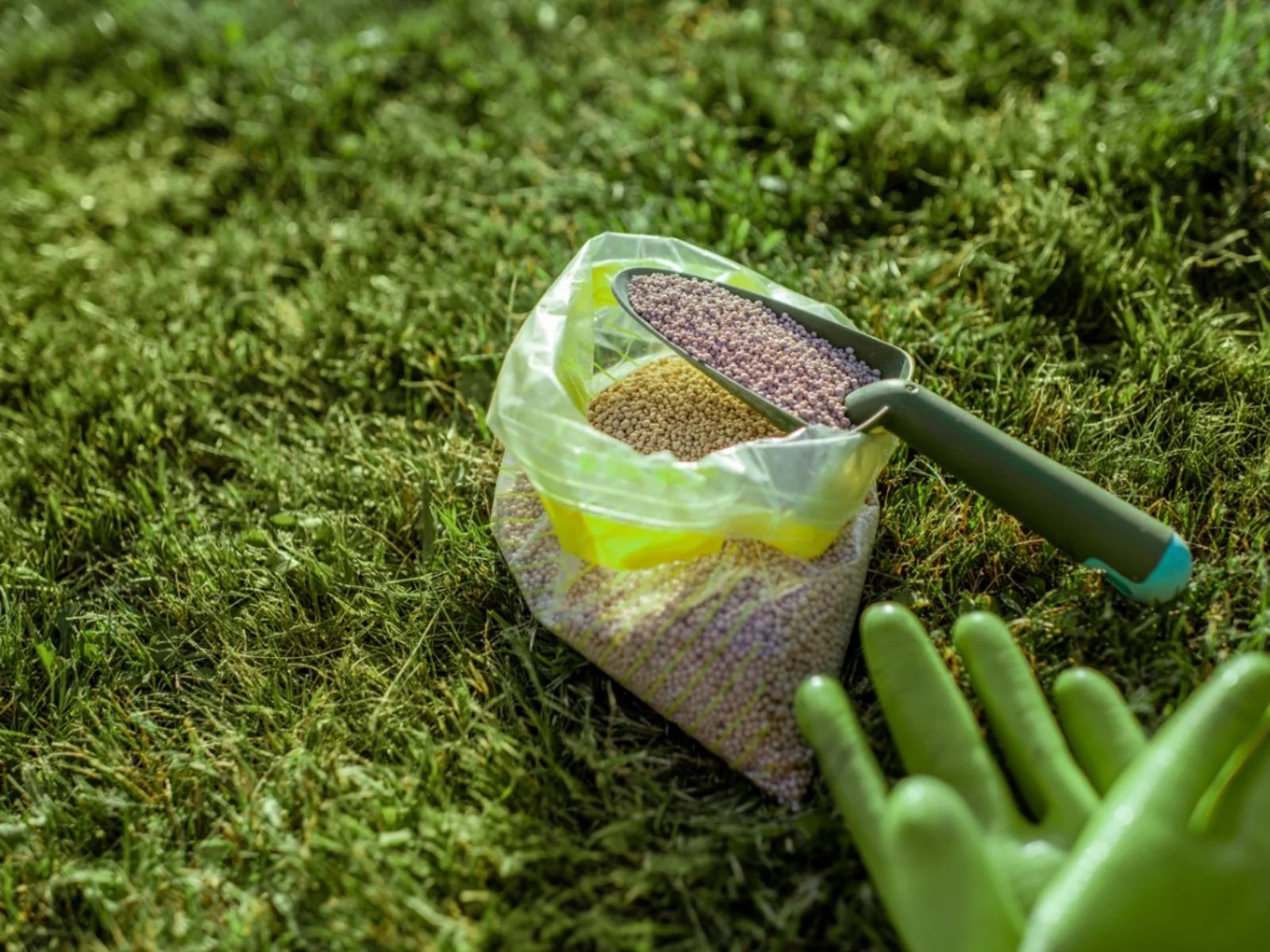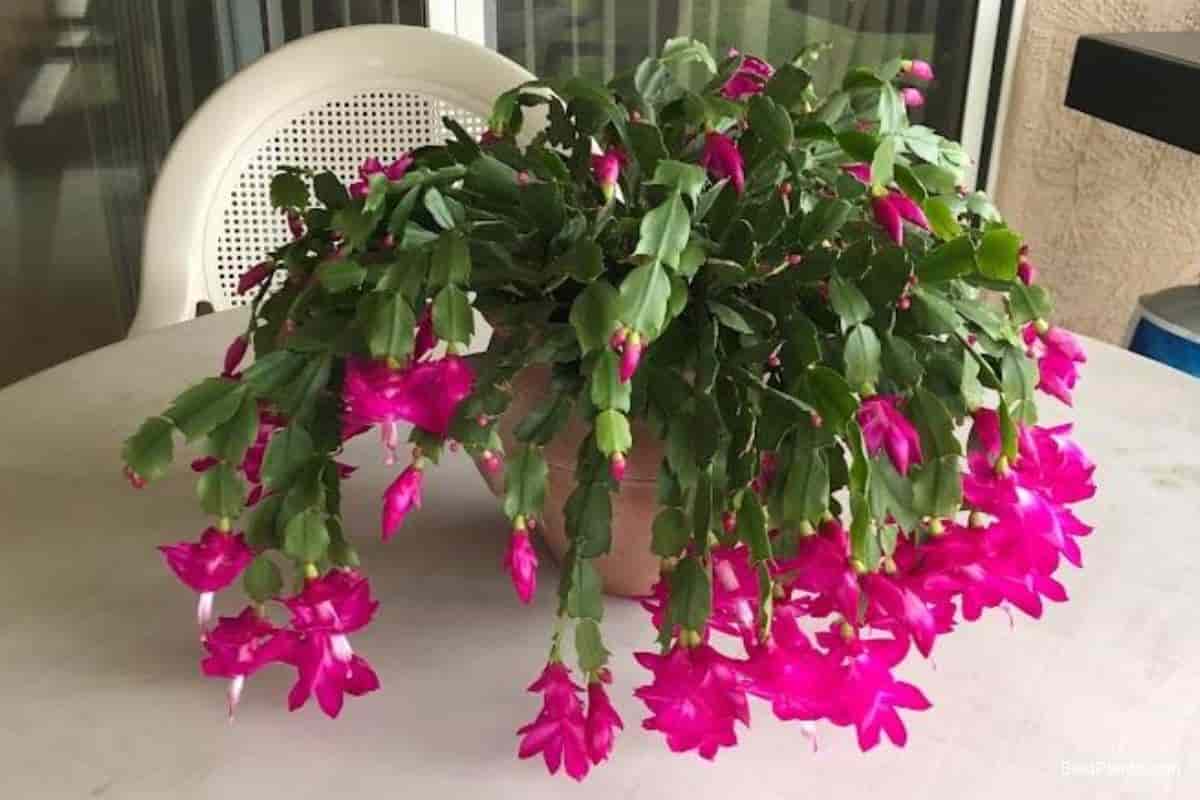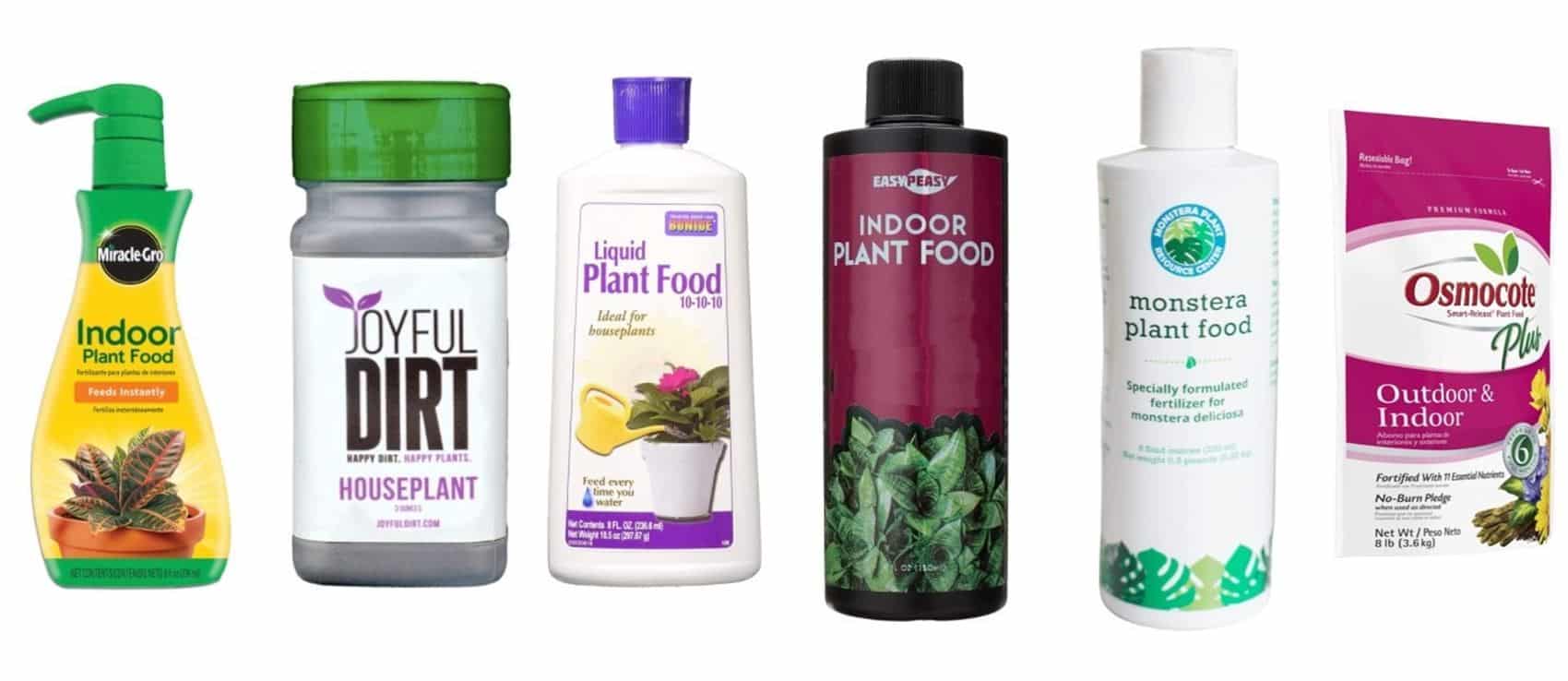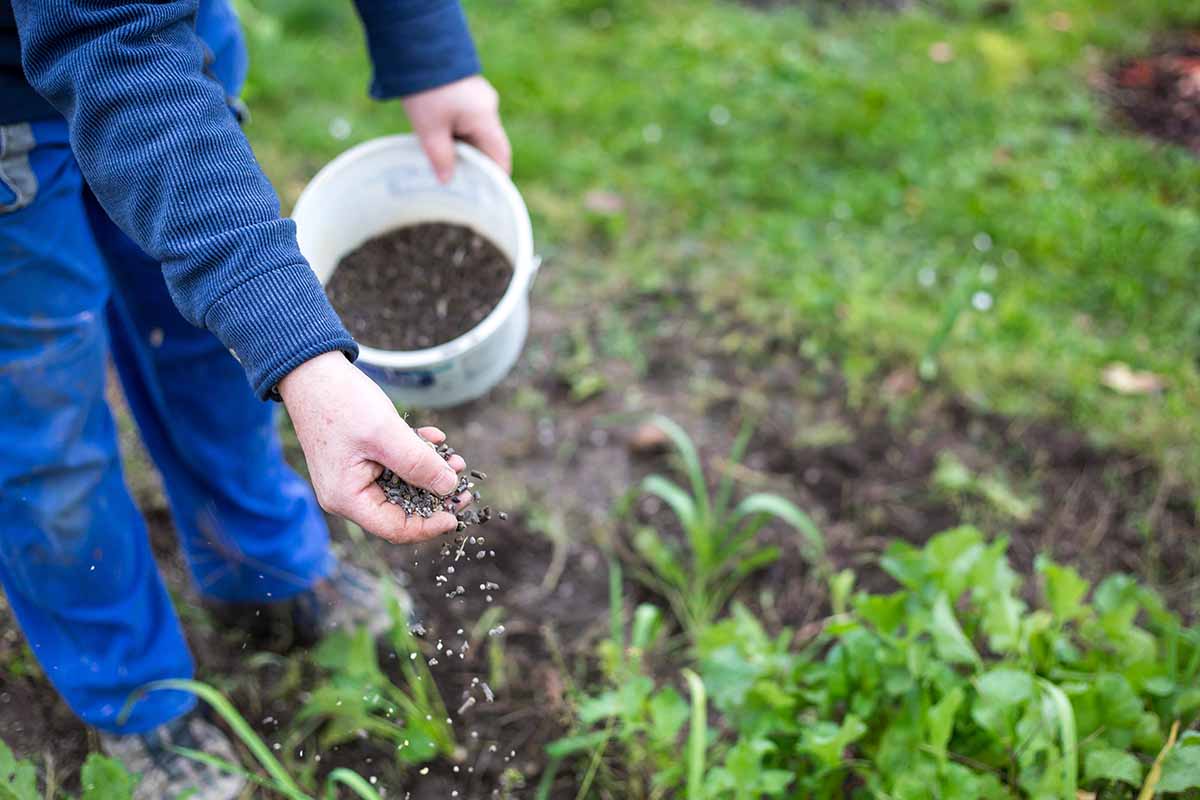Home>Gardening Basics>What Is Slow Release Fertilizer


Gardening Basics
What Is Slow Release Fertilizer
Modified: January 22, 2024
Learn the basics of getting started with slow release fertilizer to promote healthier plants and longer lasting results. Find out how it works and the benefits it provides.
(Many of the links in this article redirect to a specific reviewed product. Your purchase of these products through affiliate links helps to generate commission for Chicagolandgardening.com, at no extra cost. Learn more)
Table of Contents
- Introduction
- Definition of Slow Release Fertilizer
- How Slow Release Fertilizer Works
- Advantages of Using Slow Release Fertilizer
- Disadvantages of Using Slow Release Fertilizer
- Factors to Consider when Choosing Slow Release Fertilizer
- Common Types of Slow Release Fertilizers
- Application Methods for Slow Release Fertilizer
- Tips for Effective Use of Slow Release Fertilizer
- Conclusion
Introduction
Welcome to the world of gardening! Whether you are a seasoned gardener or just starting out, one of the key elements to a successful garden is proper fertilization. It provides essential nutrients that help plants grow and thrive. There are different types of fertilizers available, but in this article, we will focus on a specific type known as slow release fertilizer.
Slow release fertilizer, as the name implies, is a type of fertilizer that gradually releases nutrients to plants over an extended period of time. Unlike conventional fertilizers that release their nutrients all at once, slow release fertilizers deliver a steady supply of nutrients to plants, ensuring they receive a consistent level of nourishment.
So, why choose slow release fertilizer over other options? What makes it unique and beneficial? In this article, we will explore the definition of slow release fertilizer, how it works, its advantages and disadvantages, factors to consider when choosing one, common types available, application methods, and tips for its effective use.
By understanding the ins and outs of slow release fertilizer, you will be equipped with the knowledge to make informed decisions about using it in your garden. So, let’s dive in and discover the wonders of slow release fertilizer!
Definition of Slow Release Fertilizer
Before delving into the details, let’s start with a clear definition of slow release fertilizer. Slow release fertilizer, also known as controlled-release fertilizer, is a type of fertilizer that is designed to gradually release nutrients to plants over an extended period of time. Unlike conventional fertilizers that quickly dissolve and release their nutrients, slow release fertilizers are formulated to provide a steady supply of nutrients over several weeks or even months.
The main components of slow release fertilizers are nutrients such as nitrogen (N), phosphorus (P), and potassium (K), which are essential for plant growth. These nutrients are encapsulated within a coating or matrix that controls their release into the soil.
The release rate of nutrients from slow release fertilizers is influenced by various factors such as temperature, soil moisture, microbial activity, and the specific formulation of the fertilizer. These factors determine the longevity of the fertilizer and the rate at which nutrients become available to plants.
It’s important to note that slow release fertilizers come in different formulations, each with its own release characteristics. Some slow release fertilizers release nutrients gradually over several weeks, while others can provide nourishment for up to several months. This variety allows gardeners to choose the most suitable slow release fertilizer for their specific needs.
Slow release fertilizers are available in both organic and synthetic forms. Organic slow release fertilizers are derived from natural sources such as compost, manure, or bone meal. These organic fertilizers break down slowly, releasing nutrients as they decompose. Synthetic slow release fertilizers, on the other hand, are manufactured using advanced technologies that control the release of nutrients through encapsulation or coating techniques.
One of the key advantages of slow release fertilizers is that they help reduce nutrient leaching and runoff, which can be a common issue with conventional fertilizers. This makes slow release fertilizers a more environmentally friendly and sustainable choice.
Now that we have a solid understanding of what slow release fertilizer is, let’s explore how it works and why it is advantageous for gardeners.
How Slow Release Fertilizer Works
Slow release fertilizers have a unique mechanism that allows them to provide nutrients to plants gradually over an extended period of time. Unlike conventional fertilizers that are quickly dissolved and absorbed by plants, slow release fertilizers rely on controlled-release technologies to regulate the nutrient release process.
The key component of slow release fertilizers is the coating or matrix that encapsulates the nutrients. This coating serves as a barrier that controls the release rate of the nutrients. It can be made of various materials, including polymers, sulfur, resin, or organic substances.
When the slow release fertilizer is applied to the soil, it reacts to environmental factors such as moisture, temperature, and microbial activity. These factors influence the release of nutrients from the fertilizer coating into the surrounding soil.
One factor that affects the release rate is temperature. Higher temperatures stimulate the breakdown of the coating, resulting in a faster release of nutrients. On the other hand, cooler temperatures slow down the process, ensuring a more gradual release of nutrients.
The moisture level of the soil is another important factor. As the soil becomes moist, the moisture gradually breaks down the coating, allowing the nutrients to be released. Conversely, when the soil is dry, the release of nutrients is slowed down.
Microbial activity in the soil also plays a role in the breakdown of the coating. Soil microorganisms contribute to the degradation of the coating material, thus influencing the nutrient release process.
Once the nutrients are released into the soil, they are available for plant uptake. The root system of plants absorbs the nutrients as needed, ensuring a continuous supply of nourishment over time. This steady nutrient release helps prevent nutrient wastage and reduces the risk of overfertilization.
Slow release fertilizers provide a balanced nutrient supply to plants, which is crucial for their growth and development. The controlled release of nutrients mimics the natural process of nutrient uptake by plants, promoting healthier and more sustainable growth.
Now that we understand the working mechanism of slow release fertilizers, let’s explore the advantages they offer to gardeners.
Advantages of Using Slow Release Fertilizer
Slow release fertilizers offer several advantages that make them a popular choice among gardeners. Let’s explore some of the key benefits of using slow release fertilizer:
- Sustained nutrient supply: One of the significant advantages of slow release fertilizers is that they provide a continuous and balanced supply of nutrients to plants. Unlike conventional fertilizers that quickly release nutrients, slow release fertilizers gradually release nutrients over an extended period of time. This steady nutrient supply ensures that plants receive the right amount of nourishment for healthy growth and development.
- Reduced nutrient leaching: Slow release fertilizers have a lower risk of nutrient leaching compared to conventional fertilizers. The controlled-release mechanism of slow release fertilizers means that nutrients are released into the soil gradually, reducing the chances of excess nutrients being washed away by rainfall or irrigation. This helps minimize environmental pollution and allows plants to utilize nutrients more efficiently.
- Decreased frequency of application: Slow release fertilizers have a longer effectiveness compared to conventional fertilizers. Since the nutrients are released slowly, they can nourish plants for several weeks or even months. This reduces the need for frequent applications, saving time and effort for gardeners. It also means that plants receive a consistent supply of nutrients without the risk of overfertilization.
- Improved plant health: The balanced nutrient supply provided by slow release fertilizers promotes healthier plant growth. It helps plants develop stronger root systems, enhance disease resistance, and improve overall vigor. The consistent availability of nutrients also reduces the likelihood of nutrient deficiencies, resulting in lusher foliage, more abundant blooms, and higher crop yields.
- Convenience: Slow release fertilizers offer convenience to gardeners. Since they release nutrients gradually, there is no need to frequently reapply the fertilizer. This is especially beneficial for busy gardeners or those with large gardens, as it reduces the time and effort required for fertilizing plants. Additionally, slow release fertilizers can be applied at any time during the growing season, providing flexibility in application timing.
These advantages make slow release fertilizers a valuable tool in promoting optimal plant growth while minimizing environmental impact. However, it is important to be aware of the potential disadvantages associated with their use, which we will explore in the next section.
Disadvantages of Using Slow Release Fertilizer
While slow release fertilizers offer several advantages, it is important to consider their potential drawbacks before incorporating them into your gardening routine. Let’s explore some of the disadvantages of using slow release fertilizer:
- Cost: Slow release fertilizers tend to be more expensive than conventional fertilizers. The controlled-release technologies and specialized formulations used in their production contribute to higher manufacturing costs. This can make slow release fertilizers less affordable for some gardeners, especially those with large gardens or limited budgets.
- Slow nutrient availability: As their name suggests, slow release fertilizers release nutrients over a longer period of time. While this sustained nutrient release is advantageous in terms of plant health, it may not provide an immediate boost for plants that require quick nutrient replenishment. If plants are experiencing acute nutrient deficiencies or require rapid growth, the slower nutrient availability of slow release fertilizers may not be ideal.
- Less control over nutrient ratios: Slow release fertilizers typically come in pre-formulated ratios of nutrients. This means that gardeners have limited control over customizing the nutrient composition based on the specific needs of their plants. If your plants require a specific nutrient ratio for optimal growth, slow release fertilizers may not provide the flexibility to meet those exact requirements.
- Environmental impact: While slow release fertilizers help minimize nutrient leaching and runoff compared to conventional fertilizers, they are not entirely without environmental impact. Overapplication or improper use of slow release fertilizers can still contribute to nutrient pollution in water bodies. It is important to follow the recommended application rates and practices to minimize any potential adverse effects on the environment.
- Breakdown limitations: Slow release fertilizers rely on environmental factors to break down the coating and release nutrients. However, certain conditions, such as extremely dry or cold climates, may inhibit the breakdown process. This can result in slower nutrient release or reduced effectiveness of the slow release fertilizer.
Despite these disadvantages, slow release fertilizers remain a valuable option for gardeners who prioritize sustained nutrient supply and environmental considerations. By understanding these drawbacks, you can make informed decisions about whether to incorporate slow release fertilizers into your gardening practices.
Factors to Consider when Choosing Slow Release Fertilizer
When it comes to selecting a slow release fertilizer for your garden, there are certain factors to consider that will help you make an informed decision. Let’s explore these key factors:
- Nutrient needs: Assess the specific nutrient requirements of your plants. Different plants have varying nutrient needs, and it is important to choose a slow release fertilizer that provides the appropriate balance of nutrients for optimal growth. Consider the NPK (Nitrogen, Phosphorus, Potassium) ratio and any other essential nutrients required for the specific plant species.
- Release duration: Slow release fertilizers offer varying release durations, ranging from a few weeks to several months. Consider the growth cycle and lifespan of your plants to determine the appropriate duration. For annuals or short-lived plants, a shorter release duration may suffice, while longer-lasting plants may benefit from a more extended release period.
- Soil type: Take into account the characteristics of your soil, such as pH level and nutrient content. Some slow release fertilizers are formulated to address specific soil conditions, so choosing a fertilizer that suits your soil type can help optimize nutrient availability and absorption by plants.
- Environmental impact: Consider the environmental impact of the slow release fertilizer. Look for products that are environmentally friendly, with minimal potential for nutrient leaching or runoff. Inquire about the fertilizer’s composition and manufacturing processes to assess its overall sustainability.
- Application method: Determine the most convenient application method for your gardening needs. Slow release fertilizers come in various forms, including granules, pellets, and spikes. Consider the size of your garden, the type of plants you are fertilizing, and your personal preferences in terms of ease of application and coverage.
- Timing: Consider the timing of application. Some slow release fertilizers are designed for specific seasons or stages of plant growth. Assess whether you need a fertilizer that can be applied during the planting phase, as a top dressing, or throughout the growing season. Choosing a fertilizer that aligns with the plant’s growth requirements can maximize its effectiveness.
- Budget: Evaluate your budget and the cost-effectiveness of the slow release fertilizer. Compare prices and weigh the benefits against the cost to ensure that you are making a financially viable choice.
By considering these factors, you can choose a slow release fertilizer that best suits your garden’s needs, ensuring optimal nutrient supply and healthy plant growth.
Common Types of Slow Release Fertilizers
Slow release fertilizers come in various formulations, each with its own unique characteristics and release mechanisms. Here are some common types of slow release fertilizers:
- Polymer-Coated Fertilizers: These slow release fertilizers feature a polymer coating around the nutrient granules. The thickness of the coating determines the release rate of nutrients. As water penetrates the coating, it dissolves the nutrients inside, allowing them to be gradually released into the soil. Polymer-coated fertilizers offer controlled nutrient release over an extended period of time and are suitable for a wide range of plants.
- Sulfur-Coated Urea (SCU): SCU is a slow release fertilizer where urea granules are coated with elemental sulfur. The sulfur coating gradually breaks down, releasing the nitrogen into the soil. SCU is known for its extended release period, making it a popular choice for lawns, golf courses, and agricultural applications.
- Organic Slow Release Fertilizers: These slow release fertilizers are derived from natural sources such as compost, manure, or bone meal. Organic fertilizers release nutrients gradually as they decompose. They enrich the soil with organic matter, improve soil structure, and provide a slow and steady nutrient supply to plants. Organic slow release fertilizers are environmentally friendly and suitable for organic gardening practices.
- Resin-Coated Fertilizers: Resin-coated slow release fertilizers consist of nutrient granules coated with a layer of resin. The resin coating controls the nutrient release by regulating the diffusion of water and ions. These fertilizers offer a predictable and sustained release of nutrients, ensuring long-term plant nourishment.
- Controlled-Release Granules: Controlled-release granules contain nutrients that are encapsulated within a matrix or membrane. These granules release nutrients in response to environmental factors such as temperature, soil moisture, and microbial activity. Controlled-release granules provide a consistent nutrient release and are suitable for container gardening, landscape beds, and nurseries.
It is important to consider the specific needs of your plants and the desired release duration when choosing the type of slow release fertilizer. Understanding the different types available allows you to select the most suitable fertilizer formulation for your garden.
Application Methods for Slow Release Fertilizer
When it comes to applying slow release fertilizer, there are various methods that you can choose from depending on your gardening preferences and the specific needs of your plants. Here are some common application methods for slow release fertilizer:
- Surface Application: This method involves spreading the slow release fertilizer granules or pellets on the soil surface around the plants. Ensure an even distribution by using a hand-held spreader or by applying the fertilizer by hand. Once applied, gently rake or water the fertilizer into the top layer of soil to aid in its breakdown and release of nutrients.
- Top Dressing: Top dressing refers to applying the slow release fertilizer on the soil surface around established plants. Create a small indentation or trench near the drip line of the plant and distribute the fertilizer evenly in the trench. Cover the fertilizer with a light layer of soil and water thoroughly to encourage nutrient release and uptake.
- Mixing into Soil: For new plantings or when preparing the soil before planting, incorporate the slow release fertilizer into the soil. Prior to planting, spread the fertilizer evenly over the planting area and use a garden fork or tiller to mix it into the top several inches of soil. This ensures that the nutrients are dispersed throughout the root zone of the plants.
- Potting Mix Incorporation: When potting or repotting plants in containers, slow release fertilizers can be mixed directly into the potting mix. Follow the instructions provided by the fertilizer manufacturer for the appropriate amount to use based on the container size. This allows the nutrients to gradually release and nourish the plants over time.
- Spikes or Stakes: Slow release fertilizer spikes or stakes are pre-formed units that can be inserted into the soil near the plant’s root zone. The spikes slowly dissolve and release nutrients into the surrounding soil, providing a continuous nutrient supply. This method is particularly useful for trees, shrubs, and potted plants.
When applying slow release fertilizer, it is important to read and follow the manufacturer’s instructions regarding the recommended dosage and application guidelines. Proper application ensures that the nutrients are released effectively and taken up by the plants.
Remember to water the plants after fertilization to activate the nutrient release and aid in nutrient absorption. Regular watering throughout the growing season will help optimize the utilization of the slow release fertilizer.
By selecting an appropriate application method and following proper techniques, you can ensure that your plants receive a consistent supply of nutrients over time, promoting healthy growth and vibrant blooms.
Tips for Effective Use of Slow Release Fertilizer
To maximize the benefits of slow release fertilizer and ensure optimal plant growth, here are some tips to keep in mind:
- Read and follow instructions: Carefully read the instructions provided by the slow release fertilizer manufacturer. Follow the recommended dosage, application methods, and frequency of use to ensure proper nutrient release and prevent overfertilization.
- Apply at the right time: Apply slow release fertilizer at the appropriate time for maximum effectiveness. Consider the plant’s growth stage, soil temperature, and climatic conditions. Applying the fertilizer during active growth periods or just before the plant’s nutrient needs peak can enhance nutrient uptake.
- Avoid direct contact with plant foliage: When applying slow release fertilizer, avoid direct contact with the plant’s foliage. The fertilizer granules or pellets can burn or damage delicate leaves. Instead, focus on applying the fertilizer around the base of the plant, ensuring it reaches the root zone.
- Water after application: Water the soil thoroughly after applying slow release fertilizer. This helps activate the nutrient release process and aids in nutrient uptake by the plants. Adequate moisture in the soil is crucial for the breakdown of the fertilizer coating and the gradual release of nutrients.
- Monitor soil moisture levels: Keep an eye on the moisture levels of the soil. Slow release fertilizers require adequate moisture to break down and release nutrients effectively. Water the plants consistently, ensuring the soil remains consistently moist but not waterlogged.
- Store properly: If you have leftover slow release fertilizer, store it properly to maintain its effectiveness. Keep the fertilizer in a cool, dry place that is protected from moisture. Seal the fertilizer bag tightly to prevent exposure to air and moisture, which can affect its quality and nutrient content.
- Combine with other fertilizers: In certain situations, it may be beneficial to combine slow release fertilizer with other types of fertilizers. This allows for both immediate and gradual nutrient availability. However, be cautious about the overall nutrient levels to prevent overfertilization.
- Regular monitoring and adjustment: Monitor the growth and health of your plants regularly. Observe signs of nutrient deficiencies or excesses and adjust the fertilizer application if needed. Slow release fertilizers provide sustained nutrition, but occasional supplemental feeding may still be necessary depending on the specific needs of your plants.
Following these tips will help you make the most of your slow release fertilizer, providing your plants with a consistent and balanced nutrient supply for optimal growth and overall plant health.
Conclusion
Slow release fertilizer offers a unique approach to nourishing plants by gradually releasing nutrients over an extended period of time. Its controlled-release mechanism provides several advantages, such as sustained nutrient supply, reduced nutrient leaching, decreased frequency of application, improved plant health, and convenient use. However, it also has some drawbacks, including higher cost, slower nutrient availability, less control over nutrient ratios, potential environmental impact, and breakdown limitations.
When choosing a slow release fertilizer, consider factors such as your plant’s nutrient needs, release duration, soil type, environmental impact, application method, timing, and budget. Understanding the different types of slow release fertilizers, including polymer-coated, sulfur-coated urea, organic, resin-coated, and controlled-release granules, allows you to select the most suitable option for your garden.
To effectively use slow release fertilizer, follow the manufacturer’s instructions, apply at the right time, avoid direct contact with plant foliage, water after application, monitor soil moisture levels, store properly, consider combination with other fertilizers if necessary, and regularly monitor and adjust the fertilizer application based on your plant’s needs.
By incorporating slow release fertilizer into your gardening routine, you can provide your plants with a continuous supply of nutrients while minimizing the risk of overfertilization and nutrient wastage. Remember that slow release fertilizers are just one tool in your gardening arsenal, and combining them with other fertilizers and organic practices can help you achieve the healthiest and most vibrant plants possible.
